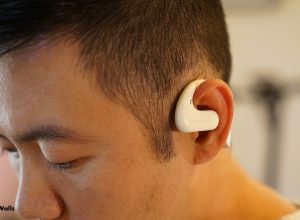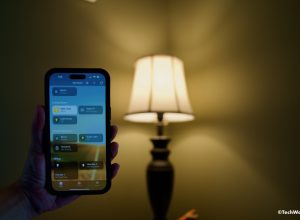Graphic designers work with a lot of color, images, elements, and shapes. They need their monitor screen to be as sharp as ever while delivering crisp images to facilitate results.
Having the right monitor panel can improve your outputs in many different ways. If you are currently searching for the Best Monitor Size for Graphic Design in 2022, this article will take you through the top selections for different focuses, the important things to know, and how to select the best option for your specific needs.
Top Monitor Panels for Graphic Design
As a professional graphic designer, you need the best monitor you can lay your hands on to improve the quality of your output. Below are some of the top monitors on the market based on different selection criteria.
Samsung UH850 Series 31.5-inch – Best with USB Hub

Samsung has created a name for itself in the display and graphics department and continues to wax strong with its range of monitors. The Samsung UH850 Series comes with a 32-inch QLED screen with 3,840 x 2,160 resolution, a mini display port, 2 HDMI ports, a display port, and a USB hub with 4 USB 4.0 input ports. The monitor comes with a black equalizer for vibrant and sensationally color-accurate pictures.
Users can expect to enjoy the split-screen support, 20 different dark levels, and a fully adjustable wall mount for a better viewing experience.
LG 27UK850-W 4K – Best Adjustability
The LG 27UK850-w 4K monitor comes with an improved control function that allows users proprietary control over everything from picture mode to brightness levels. The monitor comes with a ton of customization options, a 3,840 x 2,160 resolution, and a 27-inch ultra-high-definition 4K screen. Users can expect support for HDR 10, 60Hz refresh rate, over 99% color coverage, and virtually borderless design on three sides.
ViewSonic VG3448 (Best Extra-Wide Screen Monitor Panel)
With a 21:9 aspect ratio and a display resolution of 3,440 x 1,440, the ViewSonic VG3448 comes with a 40-degree tilt for better viewing and ergonomics. Users can enjoy the slim bezel design that adds to the aesthetics and its eco-friendly packaging. In terms of productivity, its quad HD resolution and aspect ratio means you no longer have to worry about image tearing.
BenQ PD2700U 27-inch (Best Display Modes)
The BenQ PD2700U is a monitor designed specifically with designers in mind. On top of its 4K resolution, the monitor comes with the manufacturer’s exclusive AQCOLOR technology that makes images look crisper and cleaner. It has a 60Hz refresh rate, supports HDR 10, offers a 27-inch display screen and a 16:9 aspect ratio.
Three Important Tips for Choosing Monitors for Graphic Design
Design – While the design of the monitor plays a huge role in its appeal, always remember that appeal and functionality are two separate parallels. You should never prioritize the monitor’s design over its features or functionality. While a slim bezel and ultra-thin monitor looks presentable, a functionally improved monitor with an 8K display trumps it.
Bloated Features – Manufacturers understand that consumers want more for less and so offer as many features as possible on their monitors. You should always consider the features that align with the purpose of purchase first before other features. So, ask yourself how features like built-in speakers, TV remote, multiple USB ports, and others contribute to your graphic design goal. If they don’t matter, then you shouldn’t care much about them.
Response Time – Slow and lagging monitors can be frustrating. You need monitors that respond super fast to commands and deliver crisp images that aid color separation and detailing. Be sure to consider what the monitor’s response time is. As much as 2ms response time can leave you frustrated and uninterested in the creative project you’re working on.
What to Look for In a Monitor Panel for Graphic Design
Now that you know what not to prioritize when choosing a monitor panel for your graphic design needs, we move on to the important features to look out for. These include;
High-Quality Panel
Your monitor’s panel will determine how good it is. There are different types of panels to choose from. Knowing which one is best for your graphic design needs will improve your selection and purchase accuracy. The common types of panels include:
- Twisted Nematic (TN) Panels – TN panels are the cheapest and commonest monitor panels on the market. What they offer in terms of affordability is taken away by their response times and poor color quality. Designers will experience a hard time working on these monitors because their displays can distort design perspectives and colors.
- Vertical Alignment (VA) Panels – VA Panels are mid-range, affordable – but more expensive compared to the TN panels. In terms of performance, they are a little better than TN panels but not good enough to justify their price points. They offer a better design experience to designers but also affect the design perspective and color gradients.
- In-Plane Switching (IPS) Monitors – IPS monitors are the best option for budding designers who wish to spend a decent amount on relatively great monitor features. They are often more expensive than the TN and VA panels but they make up for the cost in terms of performance. IPS monitors promise a better color rendition, improved viewing angles, and a better experience overall.
- Super In-Plane Switching (IPS) Monitors – These are the latest in the monitor market and are geared towards offering a better response time and graphic quality for less. Designers may currently find a limited option to choose from on the market.
The Monitor Panel Size Matters
The size of your monitor panel can either improve the quality of your work or frustrate you into making simple yet silly mistakes. Designers are advised to avoid sacrificing performance for size. This means that a slightly smaller monitor with better features is always preferred to a larger one with fewer design-relevant features.
Check Monitor Connectivity Needs
Connectivity isn’t readily one of the most important features you’ll look for when choosing a new monitor. However, it can significantly affect your design experience and ability to use the new monitor. Be sure to give a thought to these important considerations;
- Is there a future plan to add other monitors to the mix?
- Are you choosing a dedicated graphics card or an integrated one?
- What are the input slots on the card?
- Is there a need for an adapter? Which one?
- Does the monitor come pre-packed with cables or do you have to purchase them separately?
These factors, when considered individually and collectively can help to shape the final choice of your monitor.
Disclosure: We might earn commission from qualifying purchases. The commission help keep the rest of my content free, so thank you!



